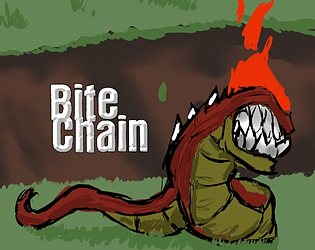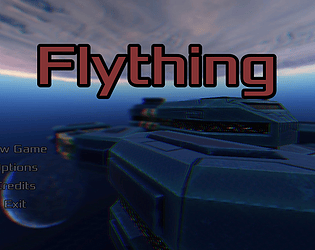alexwbc
Creator of
Recent community posts
I didn't constantly test the project for the web; [ctrl]+[w] was indeed one issue arise half way while on development. I've added some alternate keys, so you can gain/lose altitude with mouse wheel or [q] and [e] keys. These info were in the onscreen menu activated by pressing [esc]...
well... it was another mistake: the [esc] key also mess with the web version.
Anyway, finally I managed to realize the stand alone downloads were hidden. I assumed the downloads were there, but that's something I'll have to add to my quite long list of mistakes.
Now the download for Windows, Linux and MacOS are available.
Thanks for testing out!
This is my first actual finished project, so I preferred to stay safe and keep the most basic core feature around the design loop; a system design to increase the health was right over the edge, but ultimately I've left it out to turn on some polishing instead.
The ship (made by Jom) can be found here: https://sketchfab.com/3d-models/space-ship-b1ab8c3f4a11451f8baadf8490868afe
Since is CC-BY4, anyone can use it (even for commercial products). All model/stuff used in this project are available in the [credits] menu: click on each element will open a link to the source
Web version of Godot Engine don't show the ImmediateGeometry node, which is a feature that allow draw 3d geometry of one pixel (which are used to show bullet's line). The download version (which previously was erroneously set as hidden) does offer the complete visual experience (with bullets, explosion etc)
I'll skip the fancy things and narrative examples: I do strongly suggest to check how other well estabilished stores behave with their app/launcher into prioritize actual and real information the customers is actively providing.
If they are on Linux, they did install your app on Linux. They are giving an empirical and factual proof they are on Linux client.
As well as
If they are on [otherOS/device] they did install your app on their [otherOS/device]. They are giving an empirical and factual proof they are on [otherOS/device] client.
Being on a platform and look for stuff form another one (assuming you have that platform at all: not all Linux user use Windows) is the exception, it shouldn't be assumed as normality.
"you may be interested in something currently unavailable to you" doesn't sound a reasonable paradigm.
Would be this convenient also for Windows user with Linux's only games? Probably a OS they didn't even consider?
> Not all games are 3d, and it might be difficult to have some creators make 3d assets for their game
There are few fallback options: the first simplest one is to use a character in a 2d transparent (with no square border using alpha channel) which may be simple (one simple sprite) or more elaborated (different images for sprite being watch from front, side or back). Voxel art is another option: there are plenty of free editor and stuff like that, and should be accessible for anyone (think small characters like the one in rpgmaker)
> From an accessibility standpoint it's harder to navigate a 3d space
3D space offer a wide range of options that can be simply activate/deactivated with one simple click. From 3D you can always return to seamlessly "return to 2D" using the same data (think Fez game) while in 2D the best you can do to achieve 3D is the usual "cover flip". Basically 3D can generate a real 2D experience (ie: lock the camera to 2 axis and a simple zoom to have far/close view) and then enable customers to a real First Person experience. In 2D all you can have is the " flip cover", infinite scroll on XY (like google maps, minus the real 3D option) and basic scrolling. In 2D transition between these modes require additional work for every feature... while in 3D is just about lock certain camera's axis
> Performance issues, if you have a lot of games visible at once and someone is on a slow laptop or phone then it might make browsing difficult
I can theorize few options here: the first and most simple one is just about use the classical "fog" trick, in which the viewer can set up the distance based upon their own experience/hardware. General optimization can be the use of Level Of Detail technique, restrict the model to only a limited amount of vertex and UV size. Imposter billboard can also be auto generated: there are tools and guides for it.
Mobile app would be still possible (with even more aimed optimizations) but it would be a bit of a overkill: not even Steam's Big Picture mode is available for mobile, and that's even a 2D app which emulate the "simplicity of mobile ".
Anyway, a 3D store integrated in an Android TV box? That would be a cool idea tho.
Traditional digital stores use the classical store bookshelf style when they present their product with 2d arts/box cover/screenshot; it is about give the idea of a physical store since time ago digital store were a "new thing" people need help to clarify the idea of "direct pay to get/download".
Digital stores aren't a "new thing" anymore: the use of boxart and 2d square to present a digital product is today like use the 3.5 floppy disk icon as save feature.
Thanks to Html5 and WebGL nowadays web contents knows no boundary: you open a link, you play in a fully fledged 3d videogame straight in the browser. In this scenario digital stores looks more some sort of 2d gallery with small thumbnails and lot of [-30%] green square on price to catch upon people interest.
Even the a "ultimate store platform for digital distribution" like Steam is way less advanced of any random porn video website (don't judge me) that allow you to actually see a preview when you hover with the mouse (don't judge me v2.0). Okey, we can't dare to say "Steam is wrong", but we clearly know we need to be more fast if we want to catch up.
So, here's my idea: what about an actual 3d list in place of the classic "bookshelf" paradigm. Obviously not to overwrite, but simply integrate... something like the "big picture mode" in the steam client: something customers can enable/disable at their will.
Here's my proposal, this is what the list is supposed to look like:

a fully rendered 3d panel (webgl) with very lowpoly figures that developer is supposed to upload per game (if they want their game to show up in the 3d panel); the 3d model delivered by the game developer has to follow few rules in term of number of vertex/complexity, resolution etc. This is supposed to be some sort of "static 3d action figure" that may be collectible in similar fashion of Steam's flat 2d trading cards (if game developer sent more than one 3d action figure).
The 3d grid is supposed to be fully roteable, this allow for very interesting result into have some sort of bookshelf landscape that would be impossible to have in the second dimension, here's some additional idea:
- top sellers by tag: let's assume the customer filter for "action" tag and want to check the top seller.. the grid filter in all the action games, every "action figure product" gets scaled on the basis of it's download/purchase ratio. Games that sells/download more will be bigger compared the ones with less lucky
- special event bundle: the 3d grid terrain don't need to be flat, during special event/bundles it would be possible to make some kind of landscape. Let's assume different game developer agree to bundle their rpgmaker games all in one bundle: all they need is a lowpoly 3d landscape and put all their "3d action figures" on the landscape-bundle. Then customer can choose to "buy the whole land" with all the content (basically "grab the bundle") or pick the single games individually to check them out.



